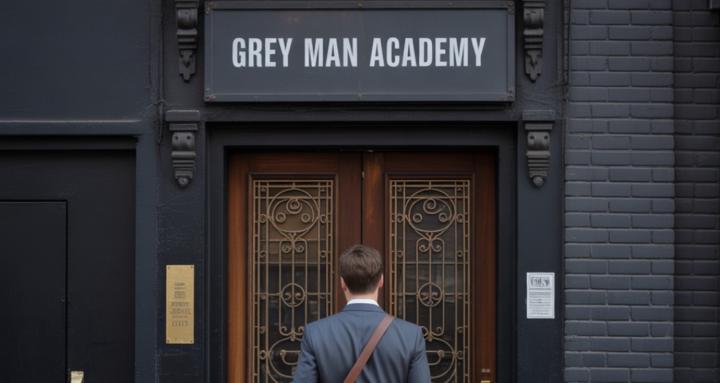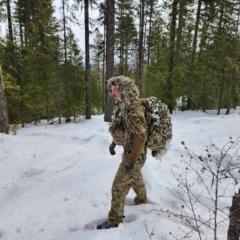13d • Tradecraft
Packing Principles (5 Basic Survival Needs/ PACE / MLCOA - MDCOA)
When you go for a wilderness outing or extended business trip overseas, how do you ensure you have all the essential gear? But not too much gear?
During my time in the military training a team of 7-12 service members for 5 days at a time in the PNW forests during all seasons of the year, and while having to maintain multiple kilometers of travel per day, I've had countless opportunities to test what gear to bring for myself and others.
Of course to a degree, I had to carry what the service ordered me to, but then as much as possible as well as now, I try to abide by the Principles of Packing.
They entail 5 Basic Survival Needs/ PACE / MLCOA - MDCOA.
Let's break it down,
5 Basic Survival Needs are
- Communications (electronic/non-electronic)
- Health (mental/physical)
- Personal Protection (enemies/elements)
- Sustenance (food/water)
- Travel (foot mobile/mechanized)
This is a rough prioritization, the situation will dictate what you want to stack heavy for your personal situation. This is dependent on at a minimum, the biome, environmental conditions, your duration, distance expected to travel and you skill level. As a reminder I always prefer to go "Skills heavy - Tools light" because skills weigh nothing, and can be adapted to the situation.
Applying this to a 5 day business trip to an austere environment, you'll want to ensure you have the skills and the tools to adequately handle the situation. Perhaps you're core essentials look like this
- Communications (electronic/non-electronic) Cell with satellite capability/Garmin Inreach and battery bank
- Health (mental/physical) Bible and first aid kit with emergency medical essentials for massive hemorrhage (TQ, Celox Rapid, Chest Seal, Gauze, etc)
- Personal Protection (enemies/elements) Knife, tactical pen, rain jacket and soft shell with smart wool cap.
- Sustenance (food/water) Trail mix, jerky, Grayel filtration bottle, steel mug, lighter, micro camp stove and fuel bottle
- Travel (foot mobile/mechanized) Garmin watch, button compass, map, cash in local currency and USD
These are all just ideas to get the juices flowing. You can alter, scale up or down all of the above, but as long as you have something in each category that makes sense, you know you aren't missing anything.
Next Principle is PACE
Primary
Alternate
Contingency
Emergency
Anything that is far too important to leave to chance, like an escape plan, you communications protocol, your medical/survival gear or even you Every Day Carry (EDC) you can use the PACE construct.
What's the best tool for the job given the situation? If it's navigation, perhaps the app on you phone is the clearest, and easiest to navigate off of. But if that fails, due to lack of service, the battery died or I don't know, you dropped it in the river while taking a scenic selfie? Having an alternate source of determining cardinal directions, where you are, and where you need to be can be very helpful. Perhaps you simple stick to the trail and go the correct direction, and it might be that easy, but oftentimes confusion and Murphy's Law sway the odds and the preverbal "Fog of War" clouds perception. So perhaps you then switch to you Garmin Watch...but the battery is sucked down in record time, because it isn't used to that much use, and you may not be using it efficiently. So when that dies, you down to a button compass you packed under the tong of your boots.
And as an emergency you remember how to use the sun and watch method, stick and shadow or simply reference the crescent moon to determine which way you need to continue to travel.
Hopefully this is beginning to make sense.
Finally, MLCOA and MDCOA
When we're planning or packing for contingencies, it's helpful to remember this military risk mitigation strategy.
For your given situation and circumstances, what is the MLCOA (Most Likely Course Of Action) most likely thing to happen or go wrong? Pack for that. For my medical kit, the most likely issue I run into on a day to day basis is either a small cut or dehydration. So having a boo boo kit with your IFAC (Individual First Aid Kit) is advised.
But we shouldn't dismiss the Most Dangerous Course Of Action (MDCOA). For emergency medical on the street, it could be dealing with a cardiac arrest. In which case we could be looking for a 1 way face valve mask and our CPR skills. Or it could be a lethal confrontation with a criminal resulting in knife or gunshot wounds, in which case perhaps a TQ and the know how of how to apply it effectively come into play.
It's important to consider the worst case scenario and the most likely scenario when packing our kit, and the same goes for planning ops too.
As an example I was recently on a few day hike and I put just the essentials that I like to travel with to stay warm and happy for a venture while crushing peaks and swimming at the lake while camping. I'll show some of my set ups here, different objectives and different times of the year in the PNW.
What do you guys like to pack that's important to you?
3
9 comments
powered by

skool.com/grey-man-academy-3923
Tradecraft, international travel safety hacks, digital security and all things Grey Man are discussed and promoted.
Suggested communities
Powered by
